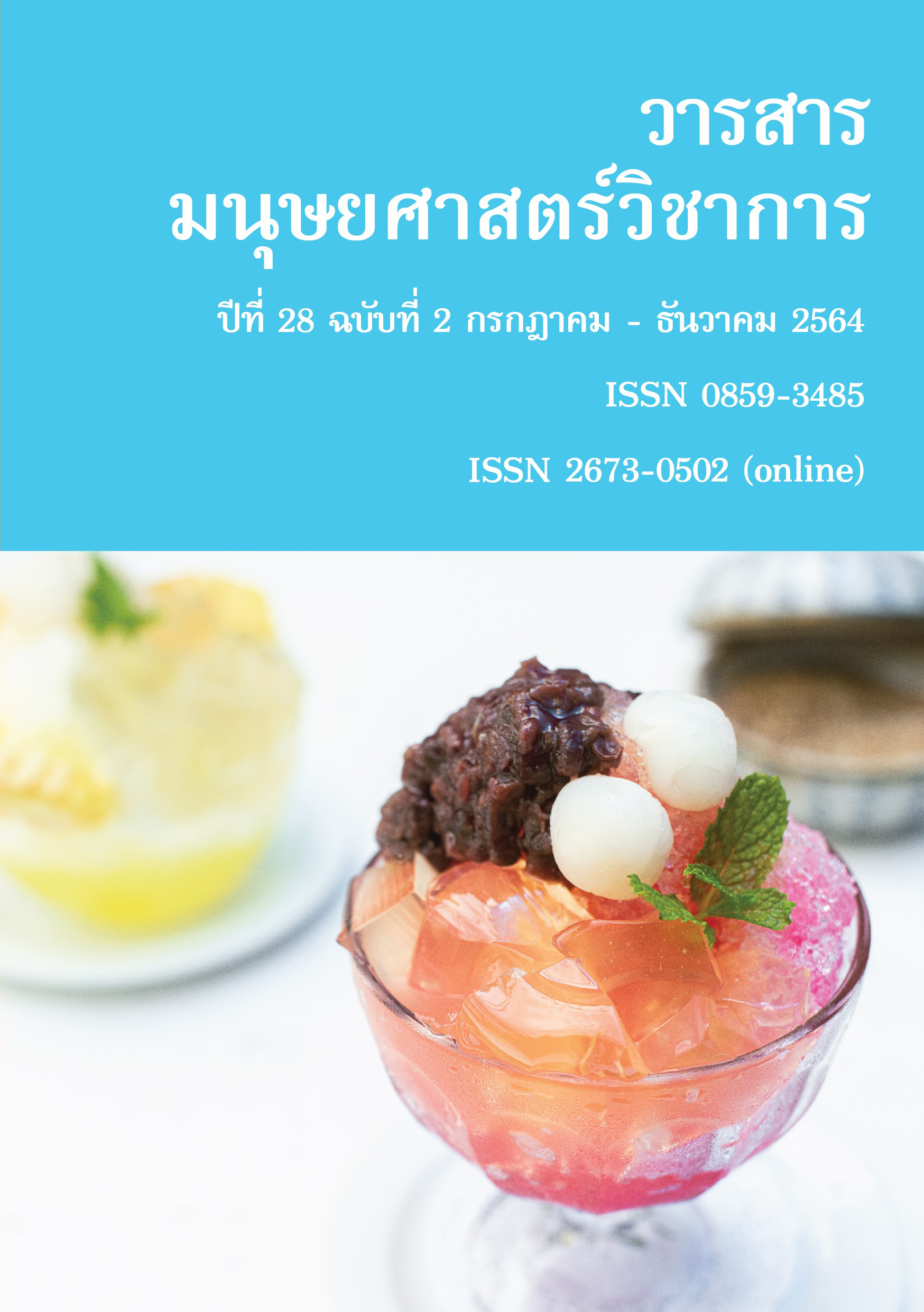Changes in the Sacrificial Rite of Chao Pho Mokkhala of Pga K’ nyau at Ban Huai Plakong, Khanechue Sub-district, Mae Ramat District, Tak Province
Main Article Content
Abstract
The purpose of this article was to study changes in the sacrificial rite of Chao Pho Mokkhala of Pga K’nyau at Ban Huai Plakong, Khanechue sub-district, Mae Ramat district, Tak province through in-depth interviews and observation with and without participation.
The study revealed that in the past there were 2 groups of people who practiced in the sacrificial rite of Chao Pho Mokkhala 1) Pga K’nyau, a minority group at Ban Huai Plakong and 2) Thai merchants who were granted community forest concession.
There were 3 forms of the sacrificial rite of Chao Pho Mokkhala in the past 1) The sacrificial rite of Chao Pho Mokkhala by the villagers which took place annually 2) The sacrificial rite of Chao Pho Mokkhala by those who acted wrongly against the traditions and customs of the village and 3) the sacrificial rite of Chao Pho Mokkhala by the merchants who were granted community forest concession as a way of paying respect and informing their business.
Due to the disappearance of heir of Por Kho (leader of the ritual) together with the influence of Christianity and social changes, all of these have resulted in the loss of those 3 forms of worship. In 2012, the worship was reviving through simple procedures and that the worship leader (Por Kho) like in the past was not any more included. The changes in the worship materials and worship timing previously from the time period of May to 13-17 April (Songkran Festival) was re-established.
At the present time, all of the villagers are allowed to participate in the worship and that it is not specific for any group of people in the village any more. In addition, the worship is open publicly for the outsiders as well as tourists who wish to pay respect to Chao Pho Mokkhala as Sacrificial Rite of Chao Pho Mokkhala is aligned with the government policy on promoting tourism of Tak province. Most importantly, it is to help carry on beliefs and the worshiping ceremony of Chao Pho Mokkhala for the future generation in the changing context.
Article Details
References
จุฑามาศ บุตรสีดา และคณะ. (2559). รายงานวิจัยหมู่บ้านห้วยปลากอง. ตาก: วิทยาลัยโพธิวิชชาลัย มหาวิทยาลัยศรีนครินทรวิโรฒ.
เชิดชาติ หิรัญโร. (2558). พลวัตของพิธี “สืบ ส่ง ถอน” ในสังคมล้านนาในปัจจุบัน. ใน ศิราพร ณ ถลาง (บรรณาธิการ), “ประเพณีสร้างสรรค์” ในสังคมไทยร่วมสมัย (หน้า 65-108). กรุงเทพฯ: ห้างหุ้นส่วนจำกัดภาพพิมพ์.
วัชราภรณ์ ดิษฐป้าน. (2557). พระอุปคุต: การสืบทอดและการผลิตซ้ำความเชื่อ ตำนานและพิธีกรรมในสังคมไทยปัจจุบัน. วิทยานิพนธ์ อักษรศาสตรดุษฎีบัณฑิต. จุฬาลงกรณ์มหาวิทยาลัย, กรุงเทพฯ. สืบค้นเมื่อ 28 ตุลาคม 2562, จาก http://cuir.car.chula.ac.th/handle/123456789/45905
MGR Online. (2559). พบถ้ำ “เจ้าพ่อโมกขละ” ชายแดนไทย-พม่า เตรียมปั้นเป็นแหล่งท่องเที่ยวแห่งใหม่ของตาก. สืบค้นเมื่อ 28 ตุลาคม 2562 จาก https://mgronline.com/local/detail/9590000026165
นางหล้า พามาลี. ลูกสาวของผู้นำในการประกอบพิธีกรรมการสักการบูชาเจ้าพ่อโมกขละ (นายพะเมี้ย) และผู้ที่มีความเคารพศรัทธาต่อเจ้าพ่อโมกขละ. (25 ตุลาคม 2562). สัมภาษณ์.
นายอภิสิทธิ์ พงษ์อภิโชติ. หลานชายของผู้นำในการประกอบพิธีกรรมการสักการบูชาเจ้าพ่อโมกขละ (นายพะเมี้ย) และผู้ที่มีความเคารพศรัทธาต่อเจ้าพ่อโมกขละ. (15 เมษายน 2562 และ25 ตุลาคม 2562). สัมภาษณ์.


